Mal was ganz Beklopptes/Exotisches! Wie wäre es mit einem jetbetriebenen Flugboot…?

Wer will kann raten, was alles verbaut wurde – Auflösung unten

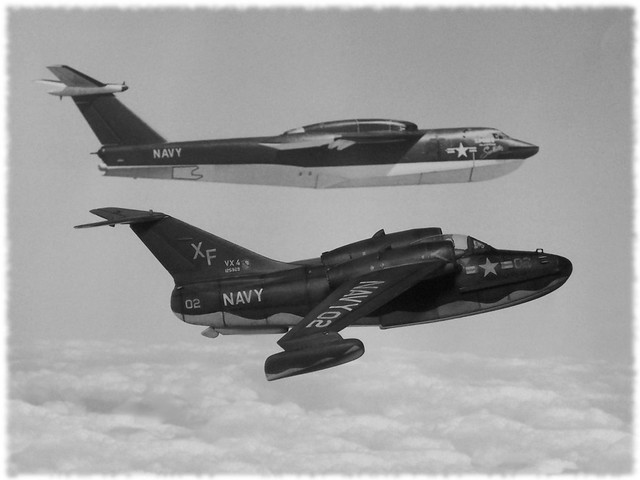 Some background:Towards the end of WWII, large, piston-engined flying boats had been used extensively in the patrol and bomber role, but with the advent of the new jet engine technology, engineers in several countries started to explore the new propulsion type's potential in different areas - including seaborne usage.
Some background:Towards the end of WWII, large, piston-engined flying boats had been used extensively in the patrol and bomber role, but with the advent of the new jet engine technology, engineers in several countries started to explore the new propulsion type's potential in different areas - including seaborne usage.
Towards the end of WWII and the far-stretched conflict theatre in the Pacific, the flying boat as well as float planes still had a large appeal due to their independence from airfields. This offered a lot of tactical flexibility. On the other side, the jet engine promised (much) higher speeds, but with the relative higher weight of early jet-driven aircraft (more fuel was needed, and more engines, as thrust was relatively low) a seaborne type would also avoid the need for a prepared and long airstrip to operate.
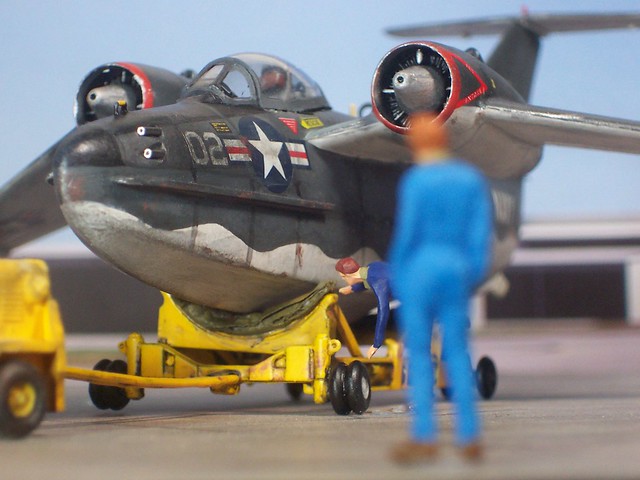

The United Kingdom was one nation that looked seriously into this kind of aircraft, and Saunders Roe presented in 1943 the proposals for a plane that should actually make it to the hardware stage: the SR.1/A, which made its maiden flight in 1947. The Soviet Union also undertook some studies, but fighters remained just proposals. Eventually OKB Beriev would produce several sea-borne, jet-powered patrol bombers (e .g. the R-1 experimental plane, and later the Be-10 flying boat), which actually entered service.


In the USA, studies for a jet-powered fighter flying boat gained momentum during the final stages of WWII. Convair developed the 'Skate' for the US Navy, a heavy night fighter, and Boeing designed a competitive concept. In parallel, and towards the end of the forties, heavier flying boats for maritime patrol were requested by the Navy - and with them a lighter, single-seat fighter that could escort them, or be used as an interceptor to defend improvised forward maritime bases. Using this type as a fast, ship-borne reconnaissance aircraft was also envisioned.
This fighter was to be capable of a similar performance to land-based fighters in this class, like the F-80 or the F-86. The successful development of the SR.A/1 in the UK had been keenly observed, and the concept of a jet-powered flying boat fighter appeared feasible and appealing.
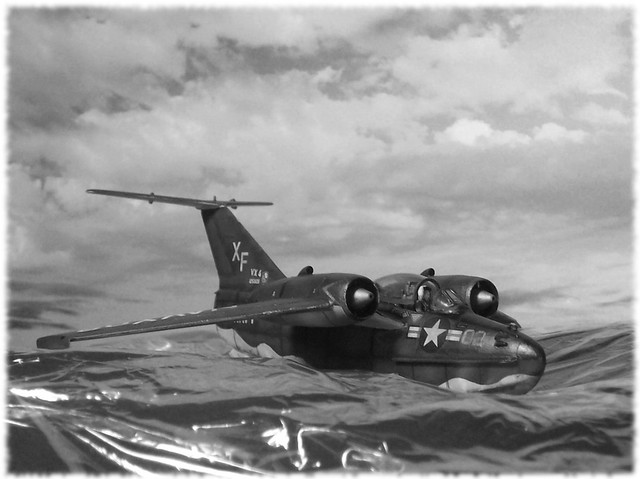
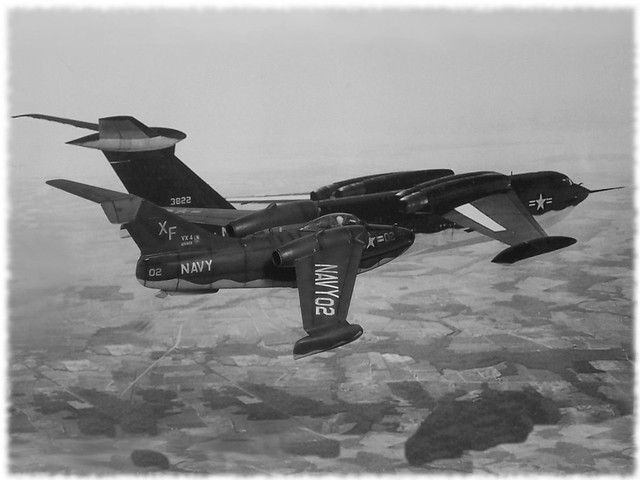
One company to respond to the USN request was Curtiss, who already had experience with float planes like the Model 82 (SOC) and the Model 97 (SC 'Seahawk') - both rather pathfinder aircraft than true combat types, though. Curtiss designed its Model 101 around two J47-GE-11 jet engines, each rated at 2.359 kN (5.200 lbf) of thrust.
The Model 101's layout was rather conventional, with a deep, single step boat hull that would house a huge amount of fuel for the requested long range escort capability. The J47-GE-11-engines (the same which powered the B-47 bomber) were placed in nacelles, at the highest point of the gull wings.
As an innovative step, the Model 101 featured swept wings - the first time ever that this was tried on a flying boat. On the tips of the wings with a 35° sweep, slats and large flaps, fixed stabilizer floats were mounted. The large fin was swept as well, and the horizontal stabilizers were placed as a T-tail high on the fin, clear of any jet turbulence or spray water.


The pilot sat in a pressurized cockpit under a bubble canopy, which offered good view, even though the massive engine nacelles blocked much of the side and rearward field of view.
The Model 101 was armed with four 20 mm (0.79 in) M3 autocannons in the nose section, with 200 RPG. An A-1CM gunsight which used an AN/APG-30 radar to automatically compute the range of a target was housed in a small radome in the nose tip. Under its inner wings, just outside of the engines, hardpoints allowed an external ordnance of up to 4.000 lb (1.816 kg), including bombs of up to 1.000 lb caliber, eight HVAR missiles, drop tanks or even two torpedoes.
Curtiss received a go-ahead and two prototypes were built during 1948. First taxi runsd tok place in late 1947, the maiden flight of prototype #01 was on February 6th 1948, the second aircraft followed only three weeks later on 1st of March 1948 - and the tests were soon halted. Both aircraft suffered from severe purpoising at 80% of the take-off speed, and this problem almost resulted in the loss of prototype #01. This was a new problem, as such high take-off speeds had never before been encountered on water, and the phenomenon was called the 'hydro-dynamic instability barrier': essentially it was unstable aquaplaning.


First attempts to solve the problem were elevator compensation and tail plane incidence angle adjustments. This helped, but the aircraft remained unstable during take-off and landing - it was not before November 1948 that modifications were made to the planing bottom of prototype #02.
This brought the purpoising to a manageable level, but did not fully cure it. Disaster struck on February 12th 1949, when the still unmodified first prototype was lost in a starting accident: the aircraft started purpoising during take-off, hit a wave with the left side stabilizer swimmer, suddenly veered off towards the left, pitching down with the nose and toppling over at more than 120mph, ripping off the left wing and the whole tail section. Miracuously, test pilot Simon Pritchard escaped alive from the sinking wreck (even though heavily injured), but the XFC-1 #01 had to be written off and any high speed ground tests were suspended.
Flight tests were resumed in June 1949 after a bottom step venting system had been introduced, and this measure finally cured the instability problem. In the meantime, two more airframes had been built: one with more powerful J47-GE-23 engines (with 2.631 kN/5.800 lbf each, these were introduced to the other two prototypes during 1950, too) and another one for static tests.
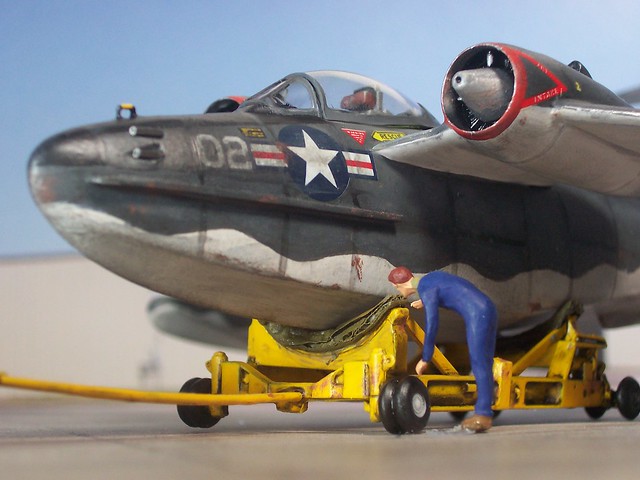

Further trials followed during 1950 and in early 1951 the re-engined machine #02 even became supersonic in a dive. While the Model 101 (which received the USN designation XFC-1 and was christened 'Oceanhawk') was up to the original specifications it was clear that it could not compete with land-based aircraft - essentially, it offered a similar performance to the land-based F-86, but the XFC-1 needed two engines for that, was much less agile and still needed a complex infrastructure to operate properly. Its independence from land bases was still its biggest selling point, though, so the development was kept up.
At that time, the USN issued a specification for a supersonic flying boat, and NACA understook a study that a Mach 2 aircraft would be feasible until 1955. This rendered the Oceanhawk more or less obsolete, as it could not keep up with this requirement, and the XFC-1 program was finally closed in 1953. Eventually, the Convair XF2Y Sea Dart would be the next (and final) step on the way to a seaborne jet fighter.
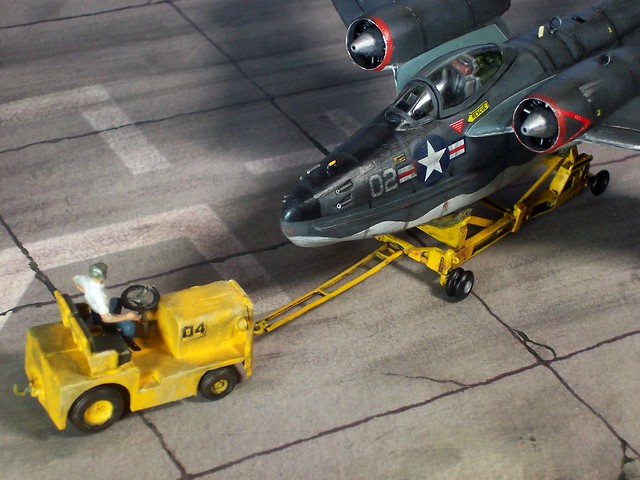
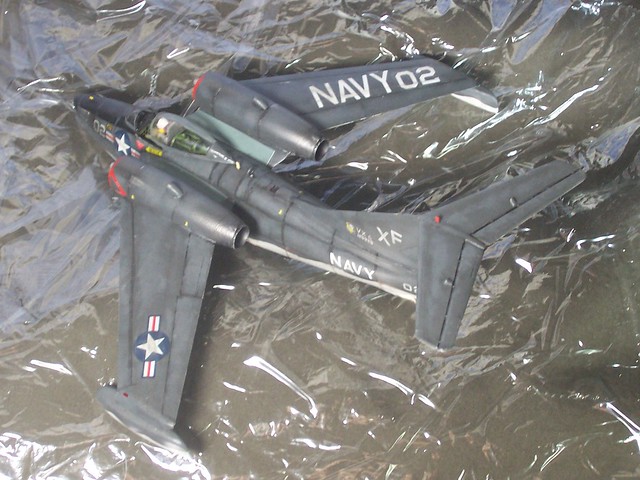
Anyway, the remaining two XFC-1 prototypes were not scrapped but allocated to the USN's test squadrons. Prototype #02 and #03 were handed over as UFC-1 to Air Development Squadron VX-4 "Evaluators" at Point Mugu, California, together with the static airframe #04 which was used for spares. Both aircraft were used as chase planes, observation platforms and target tugs. Machine #02, for instance, took part in the evaluation program of the Martin P6M SeaMaster flying boat in 1955, and was then modified for several tests with hydroski installations under the fuselage. On the other side, machine #03 was used in the development of remote drone and target tug control equipment, being re-designated DFC-1.
After serving in these second line roles, both aircraft were finally scrapped in 1965 and replaced by land-based types.

General characteristicsCrew: 1
Length: 14.11 m (46 ft 6 1/3 in)
Wingspan: 12.46 m (40 ft 9 1/2 in)
Height: 4.10 m (13 ft 5 1/4 in)
Empty weight: 9.265 kg (20.408 lb)
Loaded weight: 16.080 kg (35.418 lb)
Powerplant:2× J47-GE-23 engines, rated at 2.631 kN/5.800 lbf each
Performance:Maximum speed: 932km/h (577mph/503nm) at sea level
Range: 2.092 km (1296 ml)
Service ceiling: 13.450 m (44.040 ft)
Armament:4× 20 mm (0.79 in) M3 autocannons with 200 RPG.
Eight underwing hardpoints for a total external ordnance of up to 4.000 lb (1.816 kg), including bombs of up to 1.000 lb calibre, eight HVAR missiles, drop tanks or two torpedos.
Das Modell:Wie gesagt, große Exotik. Auf die Idee bin ich gekommen, als ich im Fernsehen eine Doku über Ekranoplane und Jet-Flugboote sah – u.a. tauchten die Martin P6M SeaMaster der Saro SR.1/A Jäger aus. Und daraus entstand die Idee: wie würde ein Begleitjäger für die P6M ausgesehen haben?
Für „so etwas“ gibt es keine Basis, also war Scratching/Kitbashing angesagt. Verbaut wurden (fast alles 1:72):
● Rumpf & Cockpit einer Hobby Boss F-86E
● Boots-Rumpf ist die untere Hälfte eines Matchbox Heinkel He 115 Schwimmers
● Flügel stammen von einer anderen Hobby Boss F-86E, eine spätere Batch 30-Maschine mit größerer Spannweite – geteilt und mit Triebwerkszellen versehen
● Diese sind aus Resin und stammen aus einem Pavla-Detailset für die Hasegawa B-47
● Finne einer Academy MiG-21F
● Höhenruder von einem 1:100 Tamiya Il-28 Bomber
● Stützschwimmer gehören zu einer antiken, Box-Scale Convair Tradewind von Revell
● Der Wagen stammt von Amodel und gehört eigentlich zum riesigen X-20 (AS-3 Kangaroo) Flugkörper
Man kann sich vorstellen: VIEL Spachtelarbeit, und die Chose ist nach Gefühl und Schritt für Schritt entstanden. Wie üblich sollte das Ding aber plausibel aussehen.
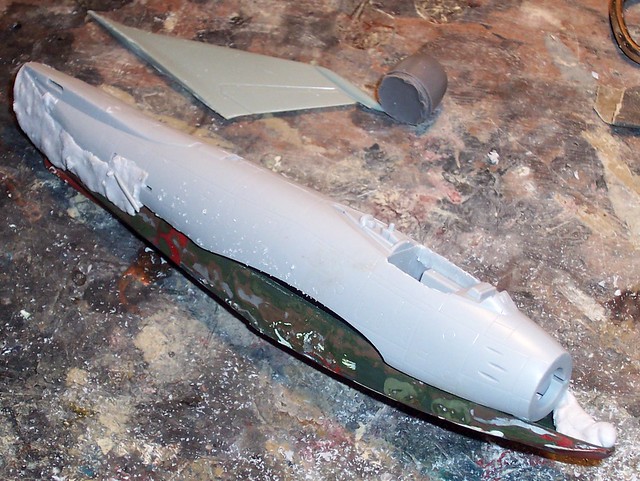

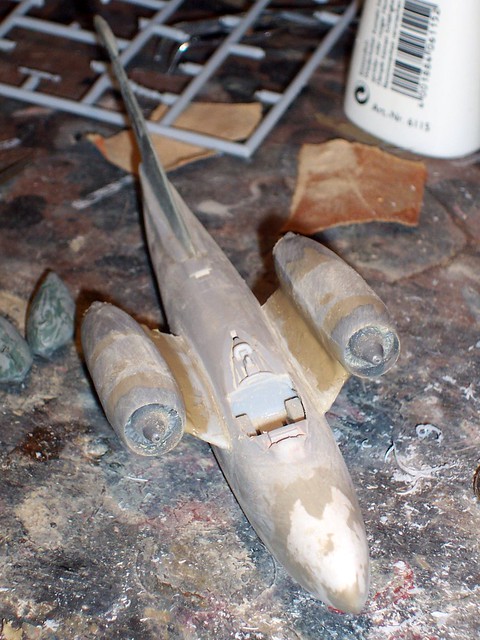
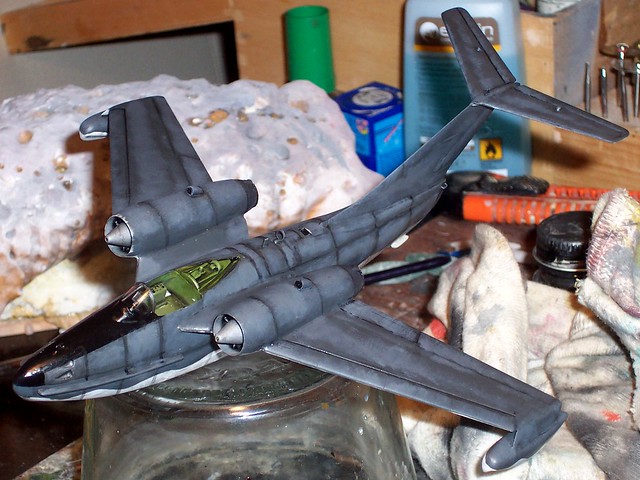
Der Trolley solo:
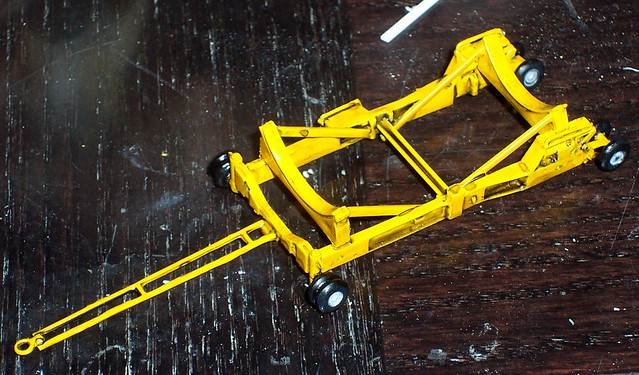
Für den Anstrich habe ich die Farben der P6M gewählt, es sollte eher schlicht bleiben, denn das Flugboot an sich ist schon kirre genug. Grundfarben sind FS 36081 oben (ein Dunkelgrau) und eigentlich Weiß von unten – letzteres habe ich aber lieber als (sehr) Hellgrau ausgeführt, damit es nicht zu strahlend rüberkommt.
Der helle Ton stammt aus der Sprühdose und wurde zuerst, nach Acryl-Primer-Grundierung und Nassschleifen, aufgebracht. Danach wurden die dunklen Oberseite und Details per Pinsel bemalt. Panel Lines sind z. T. mit Farbe simuliert, und Panels selber mit etwas hellerem Grau betont.
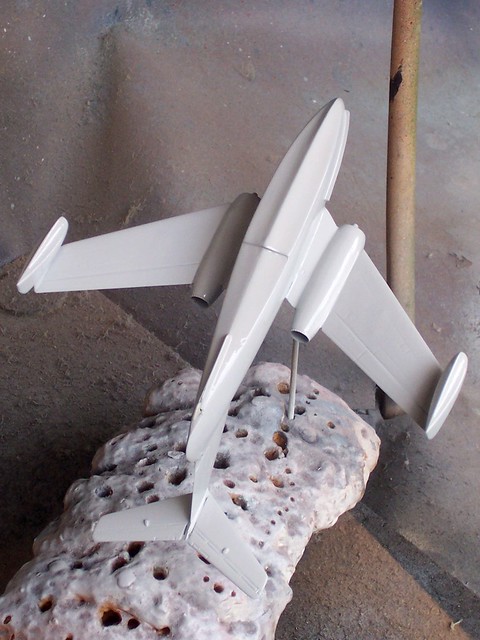

Aufkleber/Markierungen sind zusammengepuzzelt, analog realer Vorbilder aus der Zeit.
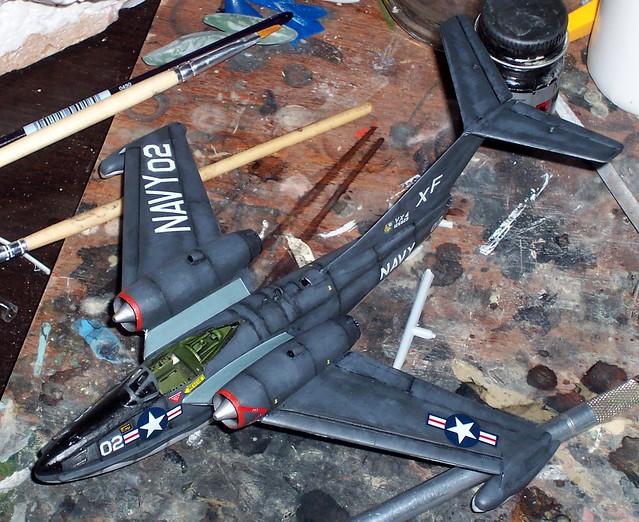
Riesenaufwand, ein bisschen plem-plem, aber das Ergebnis überzeugt?

